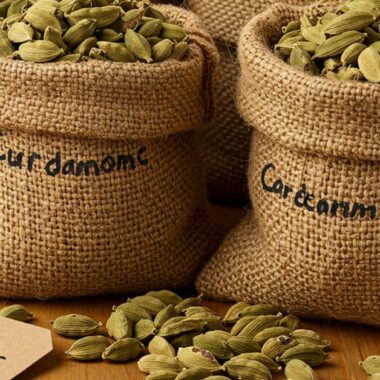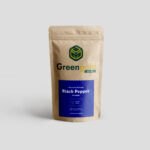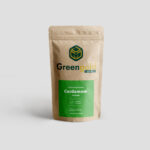Proper water management is essential for healthy cardamom plants, ensuring maximum yield and quality. Since cardamom is a moisture-loving crop, maintaining the right water balance is crucial. 🚰🌿
Here’s a complete guide on how to manage irrigation and moisture in cardamom plantations effectively. ✅🌾
🌧️ 1. Understanding Cardamom’s Water Requirements
Cardamom grows best in:
✅ High rainfall areas (1500-2500 mm/year) 🌦️
✅ Humid conditions with 50-60% shade 🌳
✅ Well-drained soil (prevents root rot) 🌱
💡 Tip: While cardamom needs plenty of moisture, waterlogging is harmful and can cause root rot! 🚫💧
🚿 2. Best Irrigation Methods for Cardamom
🌿 2.1 Drip Irrigation (Recommended)
✅ Saves up to 50% water compared to flood irrigation.
✅ Provides slow, steady moisture to roots.
✅ Reduces weed growth and soil erosion.
💡 Setup:
- Use drippers near the root zone.
- Maintain 4-6 liters of water per plant per day in dry seasons.
🌊 2.2 Sprinkler Irrigation
✅ Good for maintaining humidity in dry areas.
✅ Helps in even water distribution.
✅ Prevents soil crusting, allowing better root growth.
💡 Tip: Use low-pressure sprinklers to avoid excessive water loss. 🚿
🚜 2.3 Basin or Furrow Irrigation (For Sloped Plantations)
✅ Ideal for plantations on gentle slopes.
✅ Water flows evenly along furrows, preventing soil erosion.
✅ Works well when mulching is combined to retain moisture.
💡 Tip: Ensure proper drainage channels to prevent waterlogging.
📅 3. Watering Schedule for Cardamom
🌱 3.1 During Planting & Establishment (First 6 Months)
✅ Water twice a week if rainfall is low.
✅ Keep soil moist but not soggy.
🌾 3.2 During Growth & Flowering (6-12 Months)
✅ Critical stage – plants need consistent moisture.
✅ Water every 4-5 days during dry spells.
✅ Use mulching to reduce evaporation.
🍃 3.3 During Harvesting & Post-Harvest
✅ Reduce irrigation to prevent fungal infections.
✅ Maintain soil moisture balance using organic mulches.
💡 Tip: Avoid overwatering as excess moisture can reduce pod quality! 🚫
🍂 4. Mulching for Moisture Retention
Mulching is essential to:
✅ Prevent water evaporation 🌞
✅ Regulate soil temperature 🌡️
✅ Reduce weed growth 🌿
✅ Best Mulching Materials
- Dry leaves 🍂
- Grass clippings 🌱
- Coconut husk 🥥
- Compost or farmyard manure 🐄
💡 Tip: Apply mulch 5 cm thick around plants to improve moisture retention!
🚱 5. Preventing Waterlogging & Drainage Management
Waterlogging can cause:
🚨 Root rot and fungal diseases 🍄
🚨 Nutrient leaching leading to poor plant growth
✅ Best Drainage Practices
- Use raised beds in heavy rainfall areas.
- Create drainage channels to remove excess water.
- Avoid planting in low-lying, flood-prone areas.
💡 Tip: Check soil moisture regularly to prevent overwatering! ✅
📌 Key Takeaways for Efficient Water Management
✔️ Use drip irrigation for efficient water use.
✔️ Water regularly during dry seasons but avoid waterlogging.
✔️ Maintain proper drainage to prevent fungal diseases.
✔️ Apply mulch to retain moisture & reduce irrigation frequency.
✔️ Use shade trees to maintain a cool, humid environment.
🛒 Shop Premium Idukki Cardamom!
For the best quality, naturally grown cardamom, check out our store! 🌿✨
👉 Buy Now 🛍️💚
🌟 Conclusion
Effective water management is crucial for healthy cardamom plants and higher yields. By using sustainable irrigation techniques, proper drainage, and mulching, farmers can increase productivity while conserving water. 🌍💧













